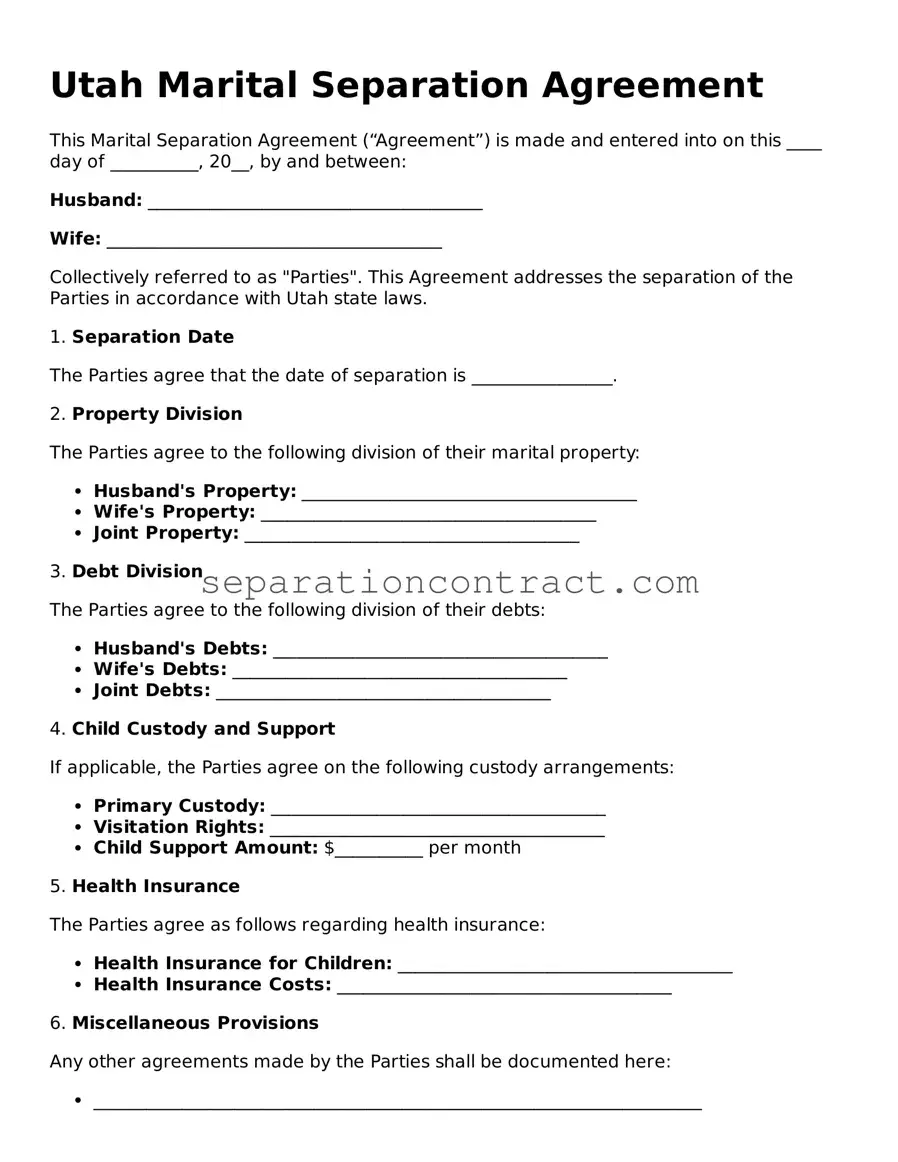Filling out the Utah Marital Separation Agreement form can be a complex process, and many individuals make common mistakes that can lead to complications later on. One frequent error is not providing complete information. This includes failing to list all assets and debts. Omitting details can create misunderstandings and disputes down the line.
Another common mistake is not being clear about child custody arrangements. Parents often assume that verbal agreements will suffice. However, it’s crucial to outline custody, visitation schedules, and child support obligations in writing. This clarity helps prevent future conflicts and ensures that both parents understand their responsibilities.
Many people also overlook the importance of reviewing the agreement before signing. Rushing through the process can lead to errors or misunderstandings. Take the time to read through the entire document to ensure that all terms are accurately reflected and understood.
Additionally, some individuals fail to consider tax implications of their separation. Certain financial decisions made in the agreement can have tax consequences. Consulting with a tax professional can provide valuable insights and help avoid unexpected tax liabilities.
Another mistake involves not seeking legal advice. While it may seem straightforward, the nuances of the law can be tricky. Having a legal expert review the agreement can help ensure that your rights are protected and that the document complies with state laws.
Finally, many people neglect to update the agreement as circumstances change. Life events such as job changes, relocations, or changes in the children's needs can necessitate modifications to the original agreement. Keeping the document current is essential for it to remain relevant and enforceable.
